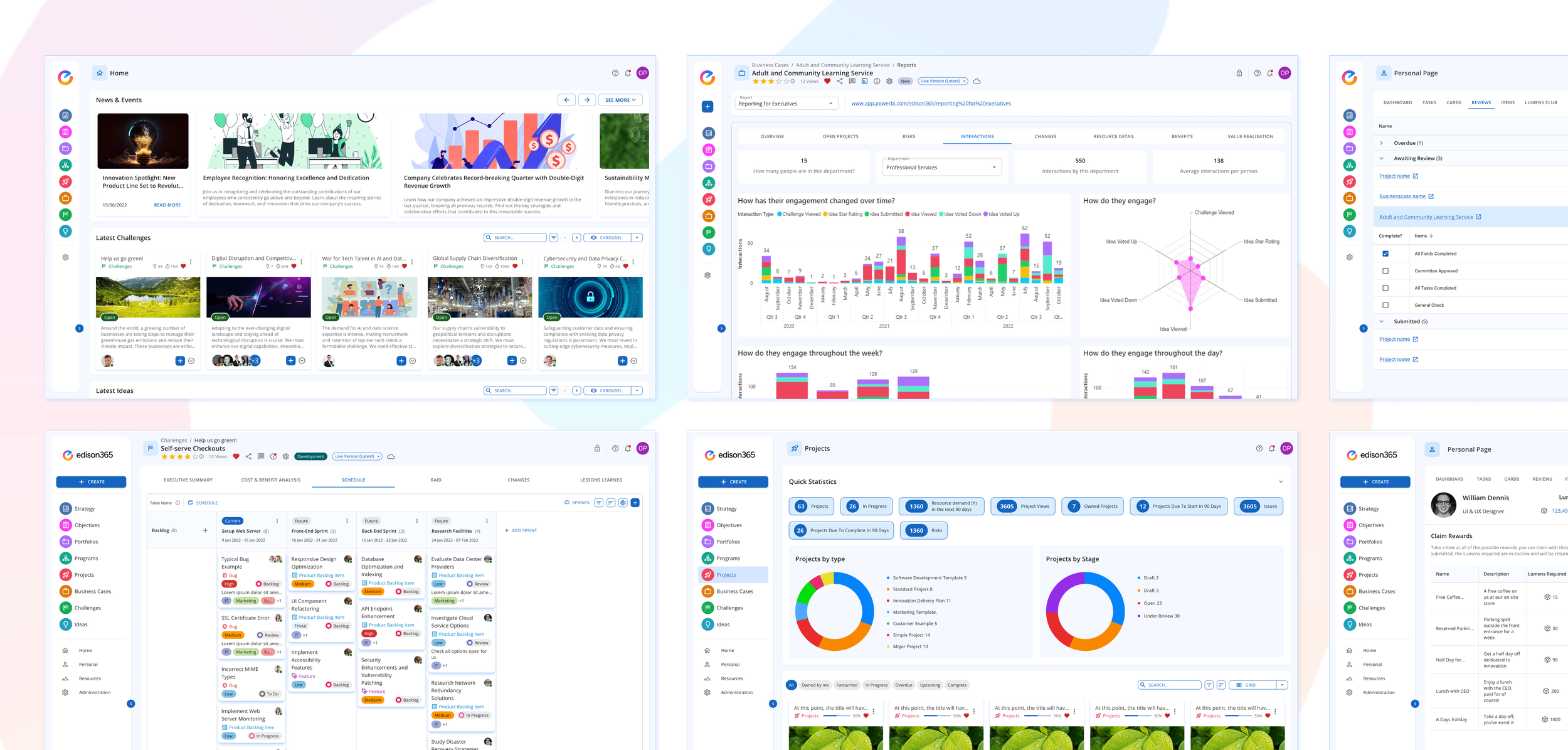As businesses strive to innovate, managing ideas effectively is a growing challenge. edison365, built on Microsoft 365, streamlines innovation, project, and resource management, turning ideas into outcomes. Their pioneering SaaS platform offers end-to-end business process management for enterprise success.
Overview
Since its inception, edison365 has revolutionized how businesses approach innovation and efficiency. Built on Microsoft 365, edison365 provides an integrated platform for managing innovation, continuous improvement, project and resource management, and business transformation. As companies strive to stay competitive, the complexities of engaging employees, optimizing resources, and managing projects have become more pronounced.
Problems
Disconnected innovation processes
Inefficient resource allocation and project management
Lack of a unified platform for continuous improvement and transformation
Difficulty in translating ideas into actionable projects
Proposed Solutions
Innovation Management: Centralise and streamline idea generation and implementation processes.
Continuous Improvement: Facilitate ongoing enhancements in processes and operations.
Project and Resource Management: Optimize resource utilization and project execution.
Business Transformation: Drive strategic changes through a unified and integrated platform.
By having a single application to manage the entire business transformation process, a manager will be able to monitor ideation from inception to implementation within one software. No risk of loosing granular details due to software switches.
Research
To successfully execute this project, a structured approach comprising several key phases was planned. Initially, we conducted in-depth behavioural interviews with all key stakeholders to gain insights into their behaviours and identify pain points within the current market offering. Additionally the user journey, spanning from project initiation to its successful completion was meticulously mapped. Alongside stakeholder research, the competition within each of the target markets were considered to understand how other apps were addressing similar challenges.
Findings
There is no one-size-fits-all solution at the enterprise level. Each organisation has their own standards and requirements that must be adhered to. Customisation and flexibility is key to achieving this.
Ensure the tool adheres to accessibility guidelines. Certain audiences, usually in public services sectors, require WCAG AA compliance as a minimum.
Organisations may not launch with all use cases (innovation, project, portfolio management etc) but they are likely to expand once the software is adopted and proven. Software must be scalable to allow for functionality expansion without additional learning effort.
Projects require tailoring to the audience and the role each user holds within a project. For example, a project manager requires a different information set to a developer creating the code for the project.
Each market sector in isolation is crowded. However, a tool that competes in all with one solution is a industry first.
Separate admin experience, project managers do not want to configure the solution.
Getting Closer to User-Centered Design
Audiences ranged drastically for this project, I felt it was important to try and represent as many groups of people as possible through a limited series of varied personas. These were designed by cross referencing quantitative and qualitative data from my user surveys and interviews with our current stakeholders.
The development of personas emerged as a pivotal strategy offering invaluable insights as the project evolved.




Exploring Common Tasks in Order to Heighten User Empathy
Through journey mapping of various personas and their typical tasks, multiple critical emotional and procedural moments were identified that edison365 needed to address.
Managers often experience anxiety when managing multiple innovation projects simultaneously.
Project Managers also get frustrated when trying to align team efforts with strategic objectives.
C Suite executives don’t have the time to be digging around in individual projects for key statistics.
Understanding a users what and why
Rapid prototyping and competitor analysis was adopted as a primary development method. Face-paced evolutions ensured I was able to:
Assess prevalent design trends within competitors applications, identifying elements that would ensure edison365 feels familiar to users.
Develop versatile screen types and intuitive gestures, such as swiping and tapping, that would enhance user interaction.
Gain insights on user expectations and interactions for different tasks.
Observe how users engaged with the interface and discussing their thought processes, I identified key areas for improvement.
Refine intuitive icons and centralised navigation, which would play a crucial role in the transition to a more polished, high-fidelity prototype.
Establishing Visual Design
Creating a cohesive visual identity for edison365, spanning the product, marketing materials, and more, involved developing a comprehensive design system that clearly outlined its visual components. The aim was to ensure that every aspect of edison365’s design consistently reflected its core mission: enabling businesses to drive innovation and streamline processes.
Key business stakeholders decided against developing a design system from scratch. After evaluating several options, Google's Material Design was selected as the foundation. This approach provided a consistent and familiar framework to build upon, allowing for a streamlined and efficient design process.
The edison365 design system uses a vibrant colour palette to evoke energy, creativity, and positivity. Predominantly blue tones instil calmness and control, while the gradient of Blue, Yellow, Orange, Pink, Purple, and Green adds a dynamic and modern touch. Clear, intuitive icons and simple button states contribute to a seamless user experience, making tasks feel manageable. The use of a contemporary sans-serif font with open counters ensures that messaging is legible and clear, reinforcing the brand’s forward-thinking, approachable nature.
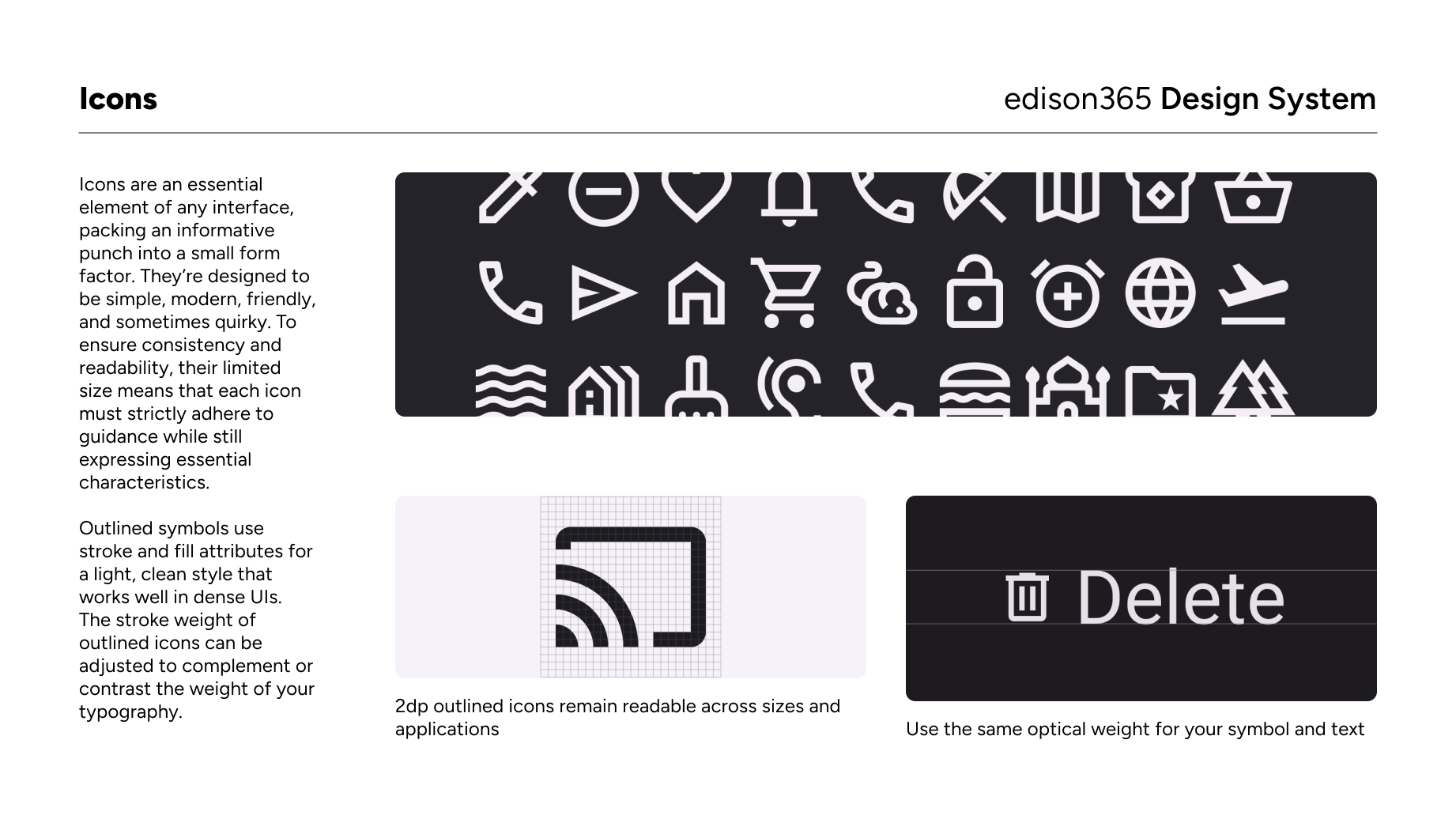
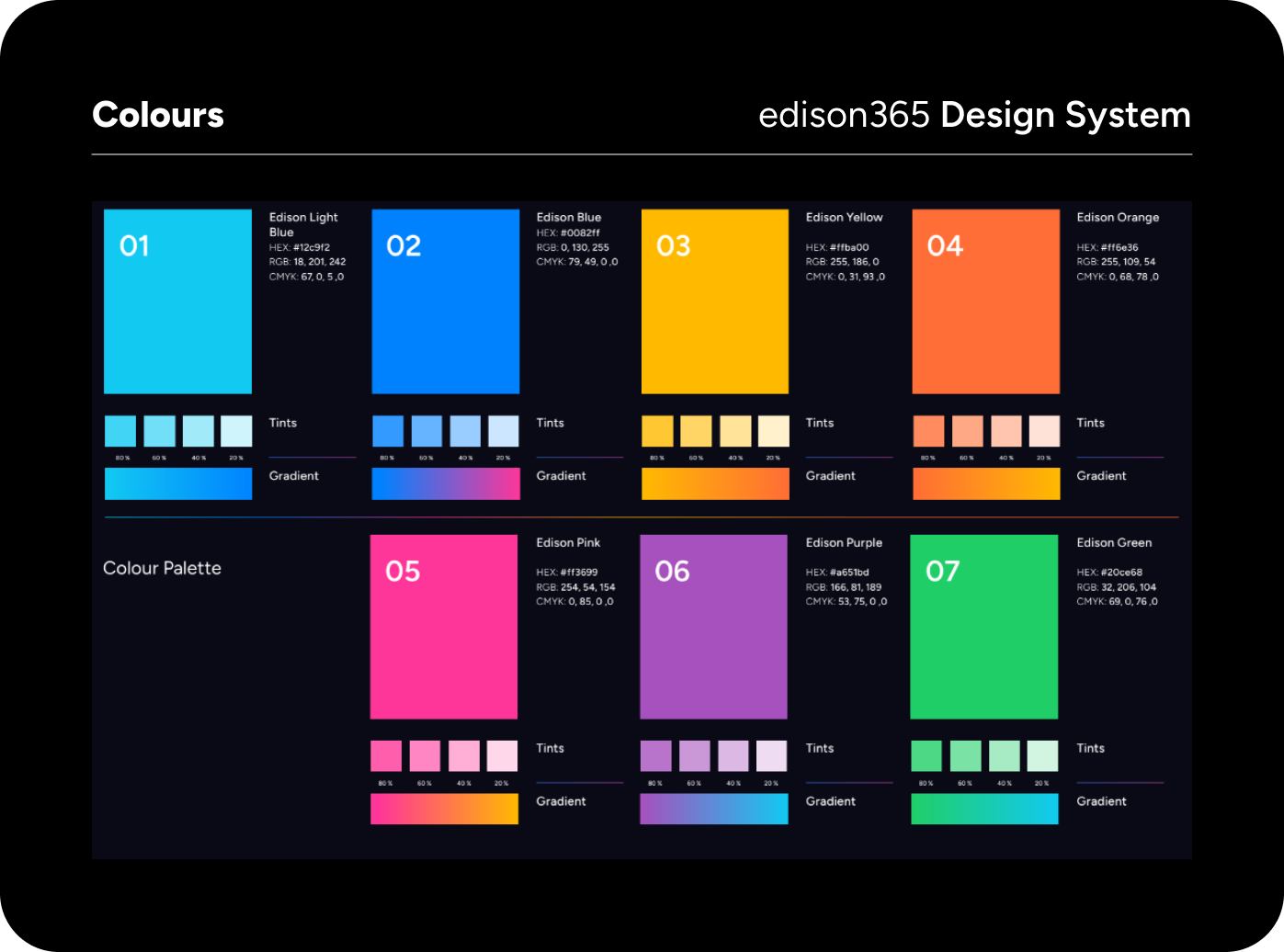


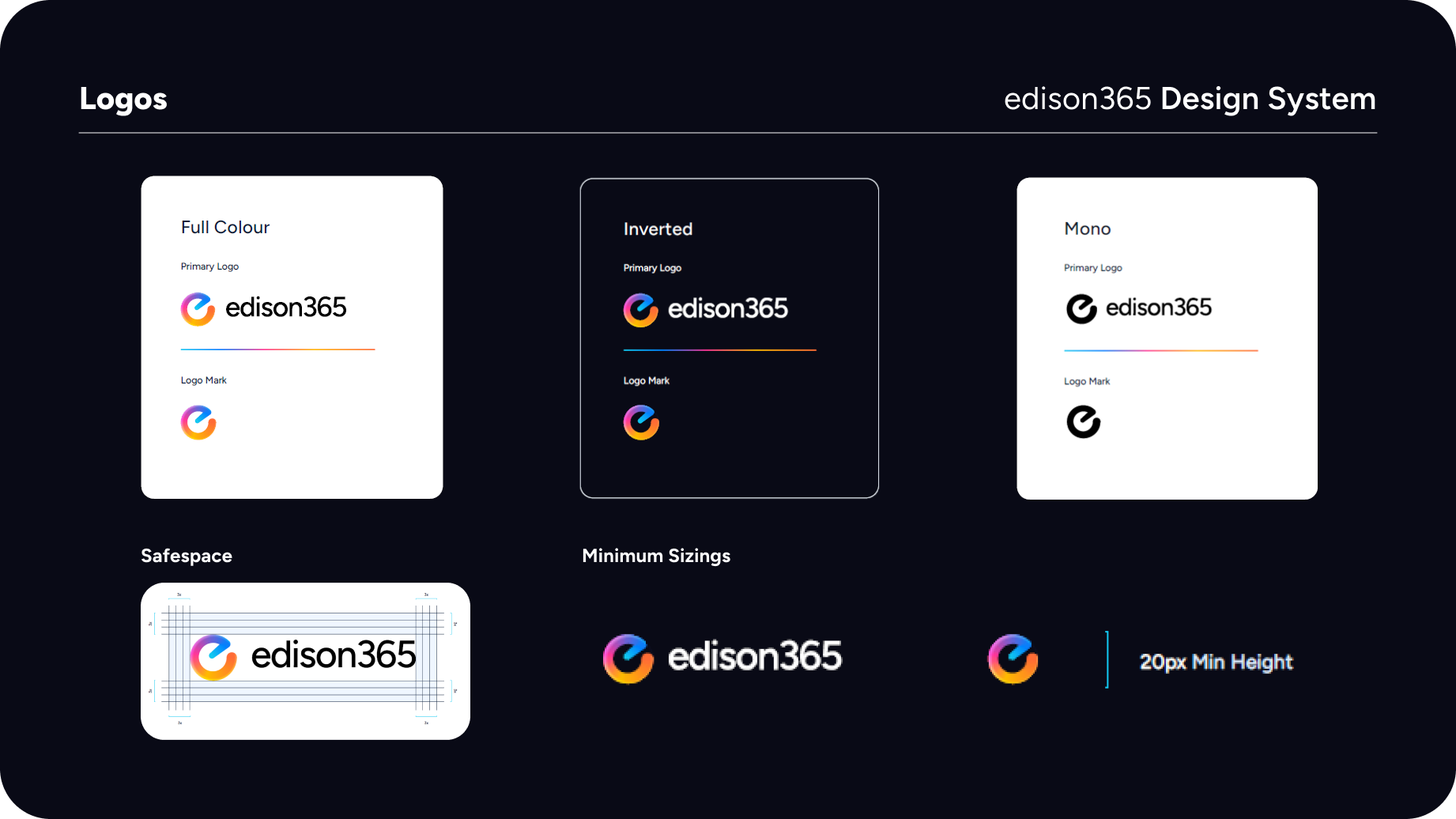

Identifying New Challenges
The high-fidelity prototype of edison365 brought test users closest to the real experience yet, revealing a few key concerns. While users were able to navigate the innovation management process, the realistic nature of the platform raised questions around security, privacy, and password recovery, along with general trust. Additionally, users identified a new feature they hadn’t considered before: the ability to track and visualize the value they were gaining from different projects or innovations. This insight could help users make more informed decisions on resource allocation and project prioritisation.

Home, News, Discover & Record Screens
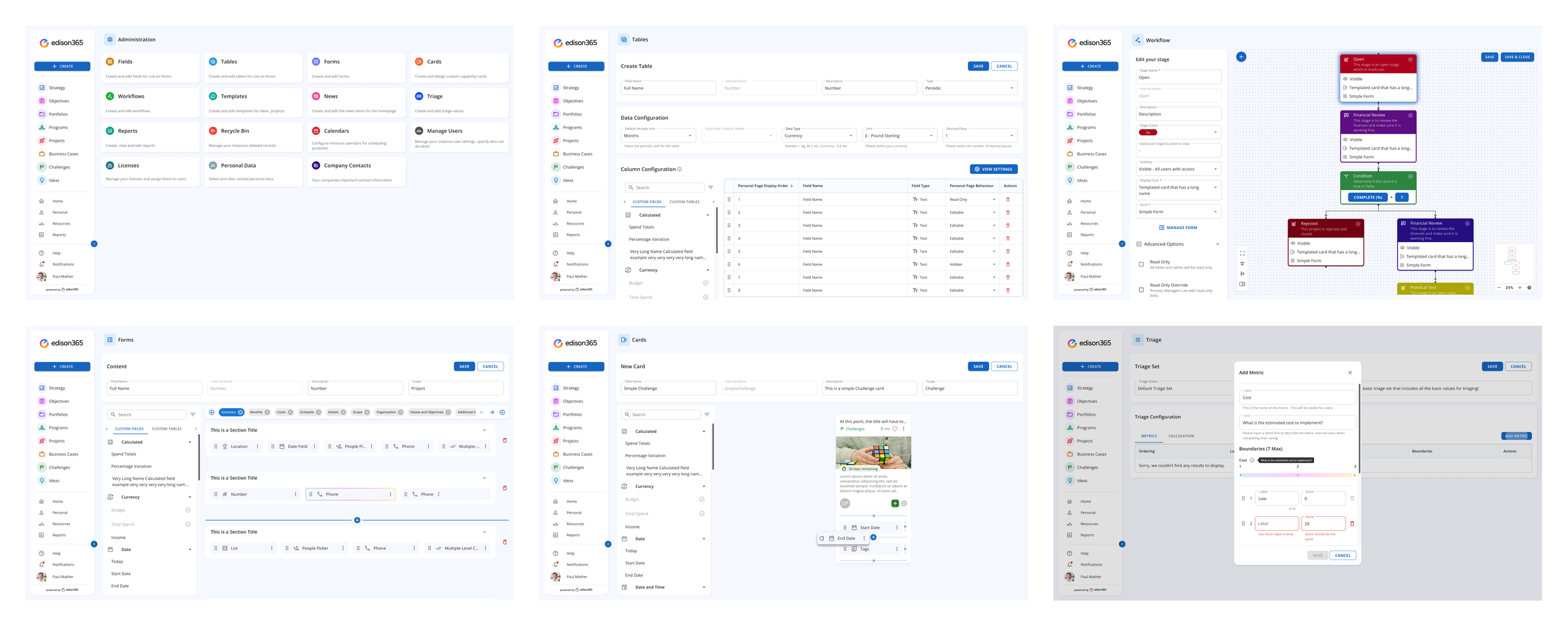
Administration Screens

Personal Page, GANTT Chart, Notifications & Versioning

Resources & Artificial Intelligence Integrations

Triage & Stage Reviews, Submitting Ideas
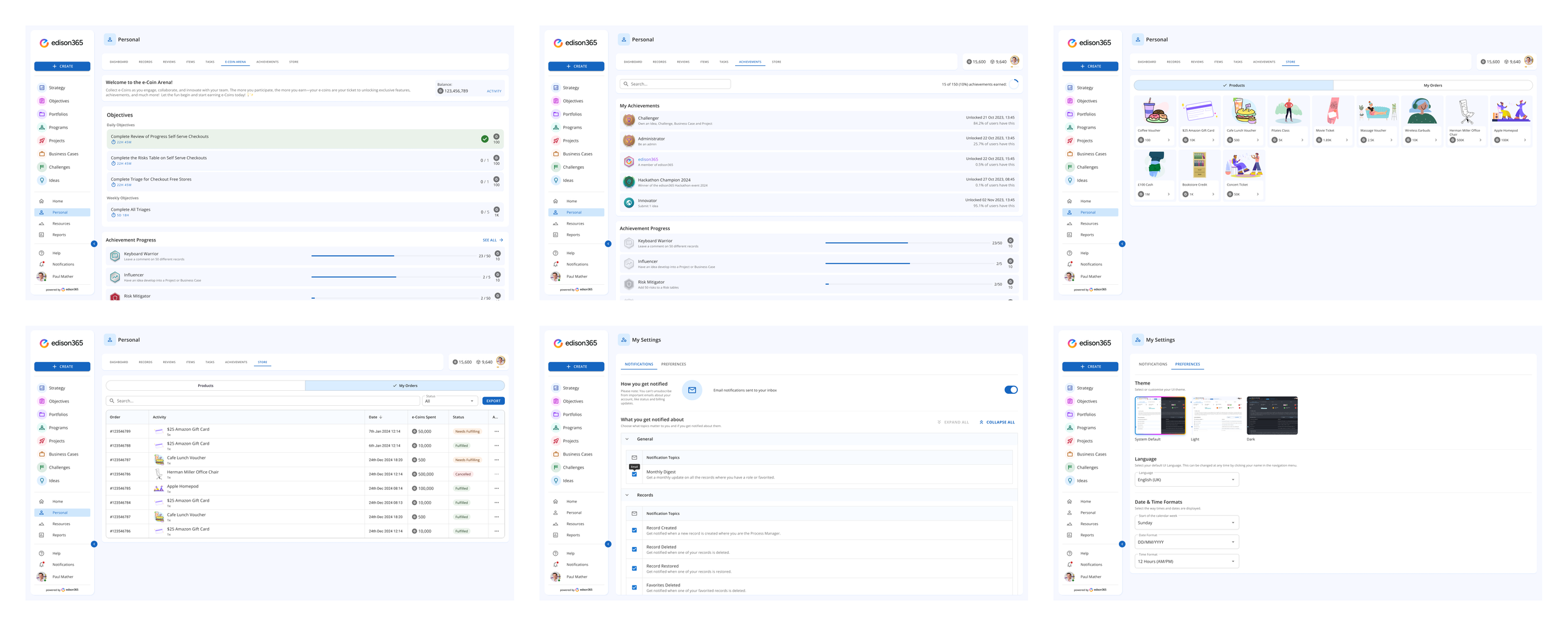
Gamification & Settings
Critical Analysis
Advanced filtering features could be introduced to refine the innovation tracking experience, enabling users to tailor views based on specific metrics or criteria.
A more valuable personal experience would allow users to manage their workloads within one central location across all capabilities. The current implementation was focused towards Project Management users which limited the innovation space functionality.
Encouraging user input through targeted prompts and providing personalised recommendations based on project activity would further improve functionality and engagement.
More direct feedback loops would ensure users are confident in how their projects are being managed without the need to investigate on an individual basis.
Lessons Learned
I entered the edison365 project with the assumption that the platform would focus solely on idea submission and tracking. However, it quickly became clear that users required access to more detailed information in order to make informed decisions about their innovation processes.
Concerns about data security and privacy emerged, especially regarding sensitive company information. To address these, the platform had to offer clear explanations, reassurances, and easy access to support.
Users also wanted greater control over how they filtered and explored innovation data. They didn’t just want reports—they wanted actionable insights to drive decisions and maximise value from their innovation efforts.
